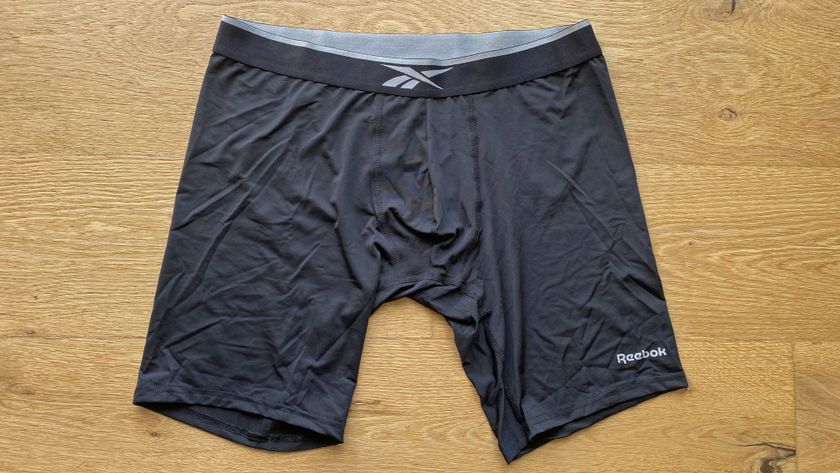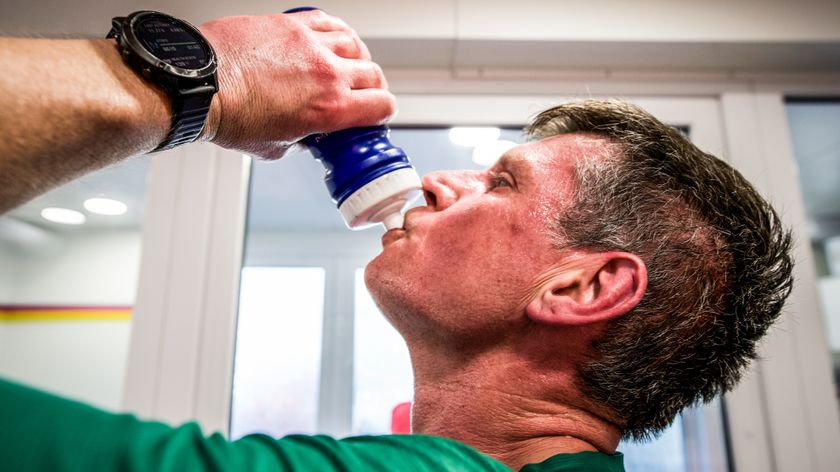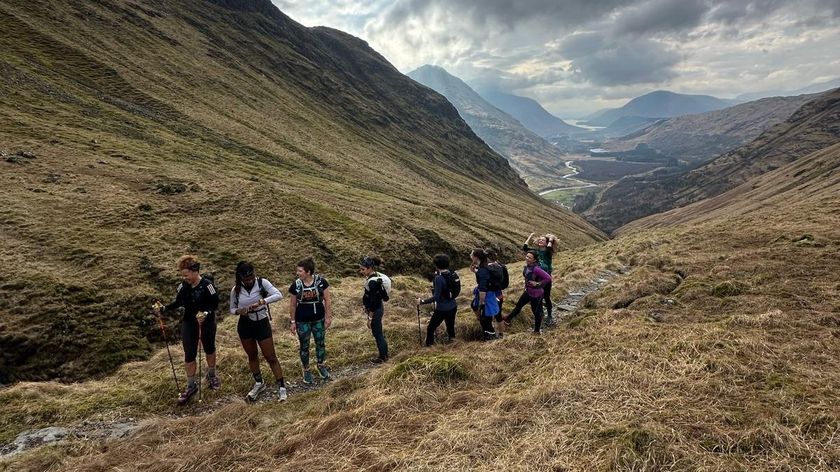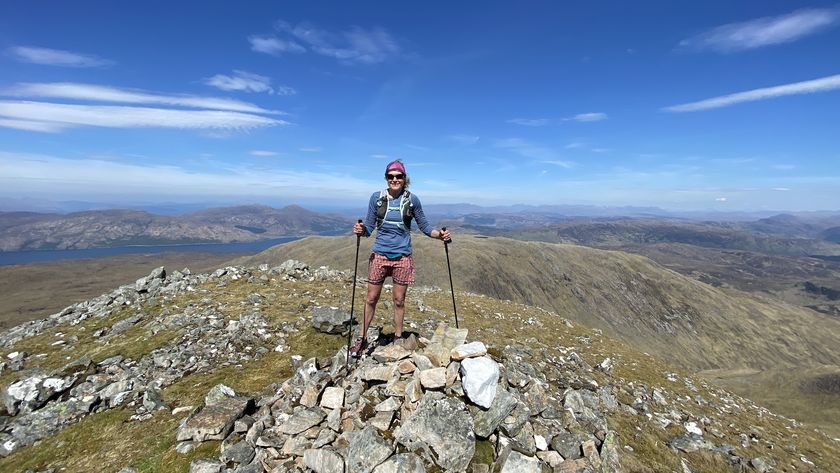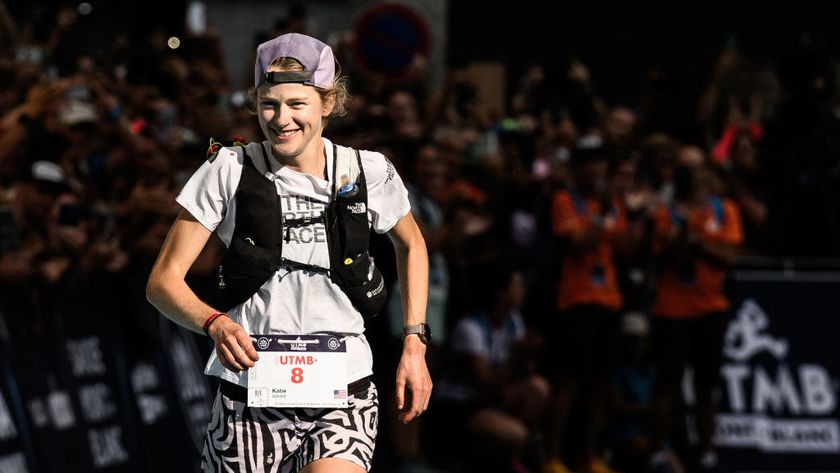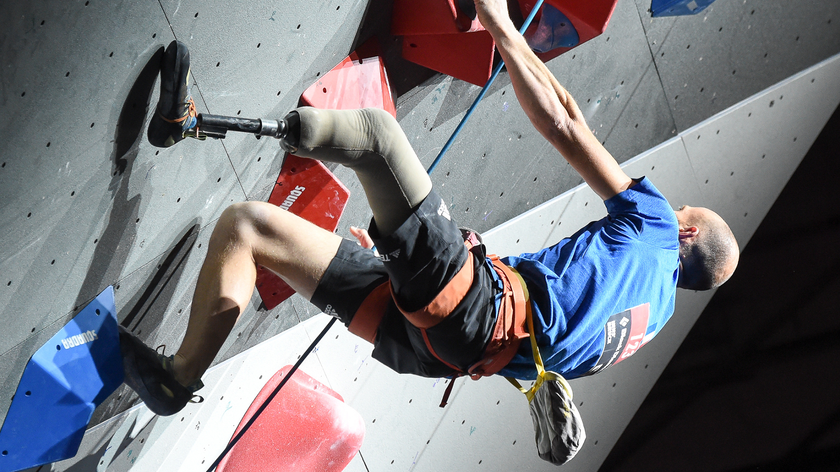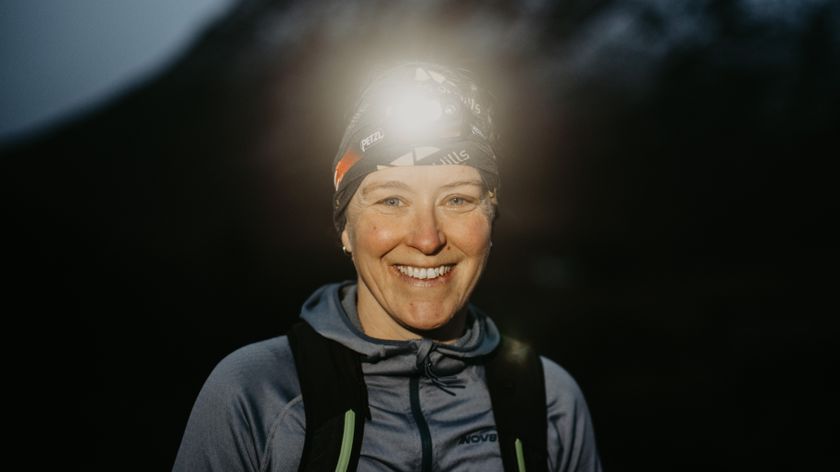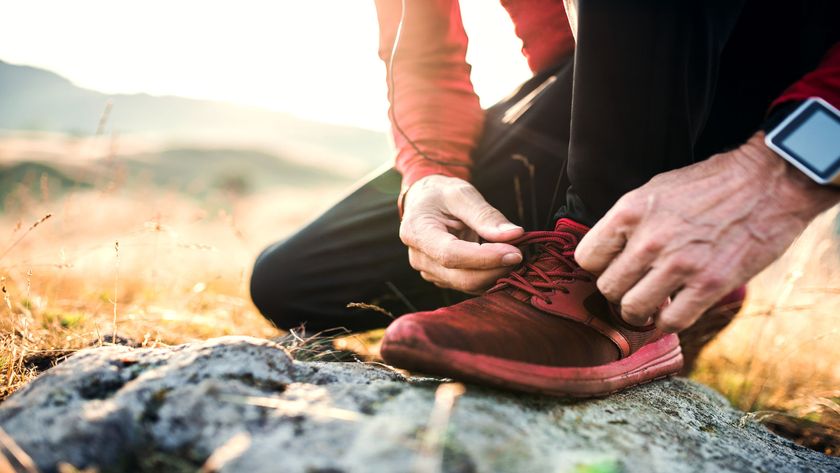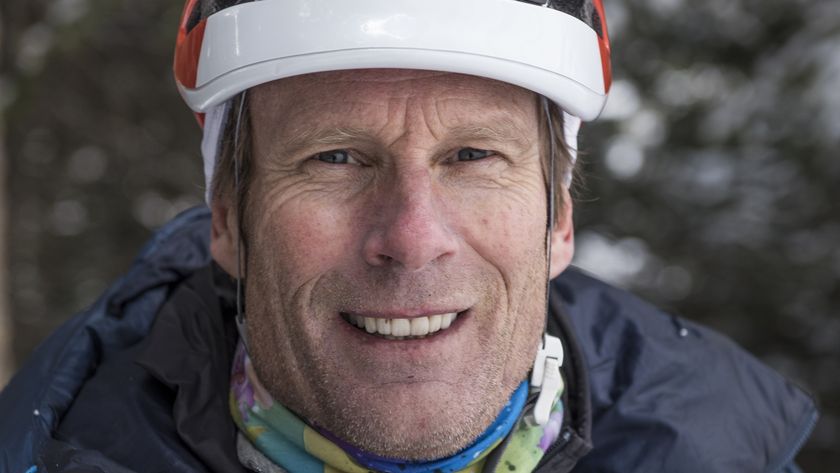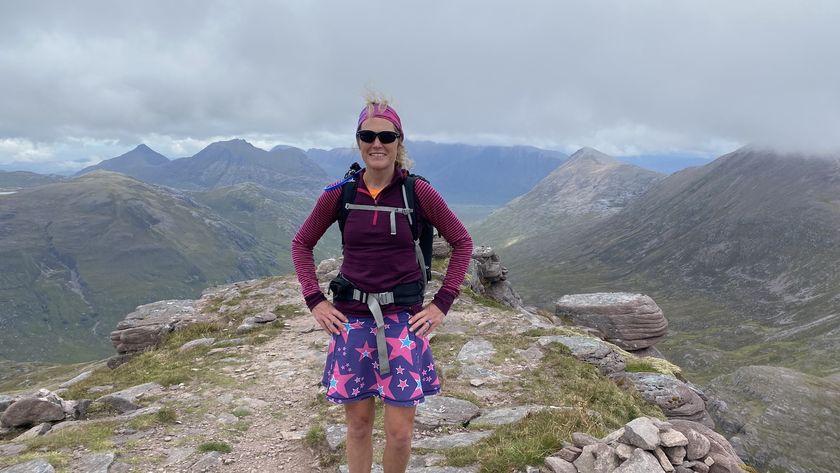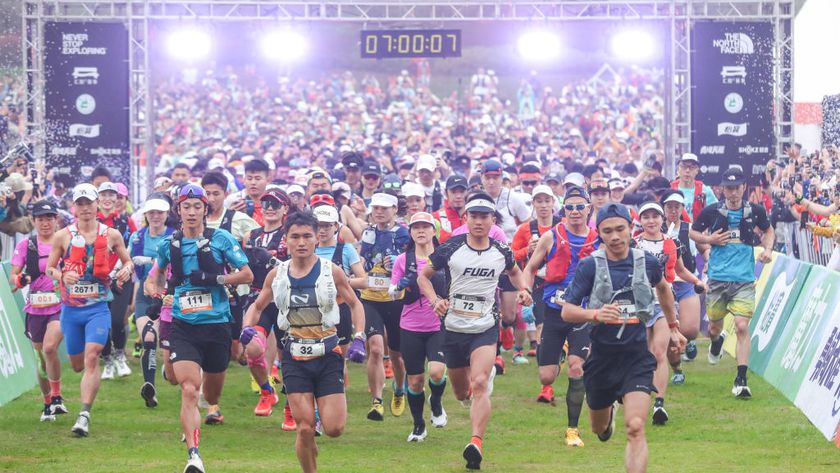6 sun protection tips for hiking and running
Our sun protection tips cover everything from choosing when and where to go, to how to dress when you’re on the trail, to help keep you safe in all seasons
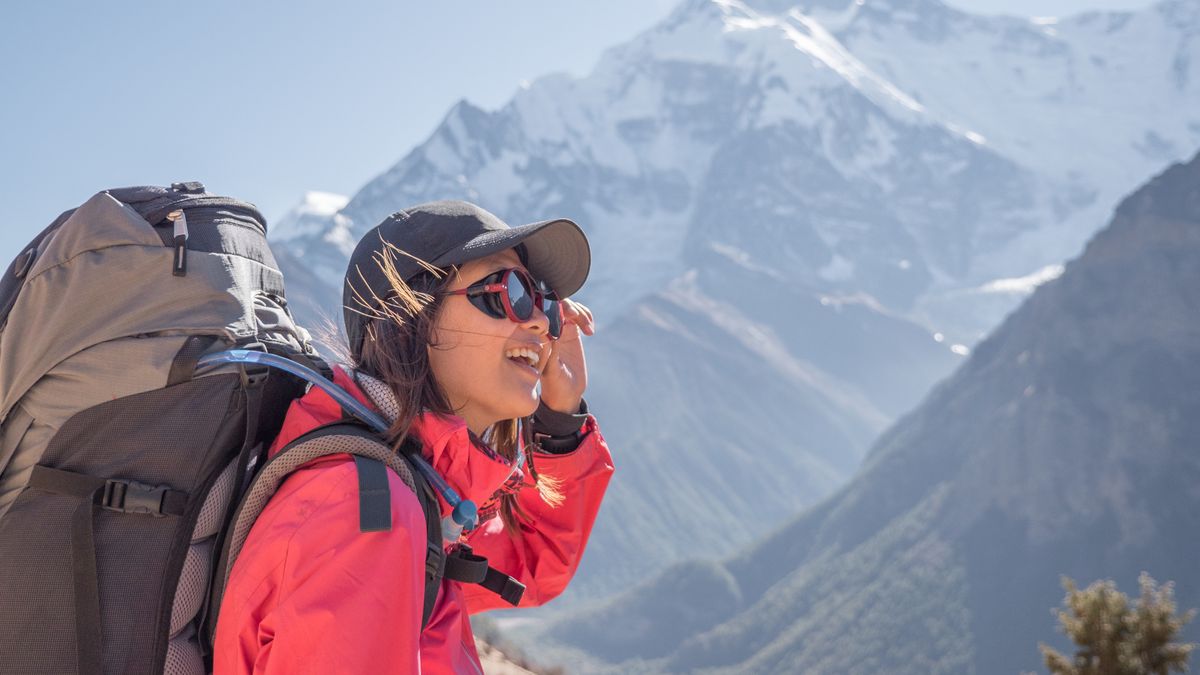
The importance of sun protection isn’t limited to the summer months, especially when you love hitting the trails. You can get sunburn at any time of the year and lots of the terrain that you like to adventure on or near – such as water and snow – reflect the sun’s UV rays, making them more harmful to your skin and eyes. Our sun protection tips for hiking and running cover everything from choosing when and where to go, to how to dress when you’re on the trail, to help keep you safe in all seasons.
1. Timing
The sun’s rays are strongest in the middle of the day, so try to get out first thing in the morning if you can, or in the late afternoon, limiting your time outdoors between 10 a.m. and 4 p.m. Dawn and dusk make beautiful times to be outdoors anyway, with less intensity from the sun. If you’re going out on a full day hike or long run, check out our tips on location to choose your trail wisely.
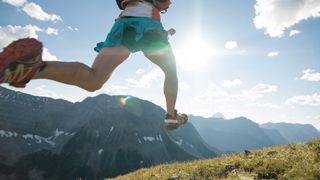
2. Location
When you’re going to be out all day, or in the middle of the day, look for north-facing and shaded trails with lots of tree coverage and avoid hiking near water, snow and sand, which reflect the sun’s rays and increase your UV exposure.
3. Clothing
When the sun’s out, many of us are tempted to expose as much flesh as possible to stay cool and slap on the sunscreen, but your hiking and running clothes provide important UV protection and many are designed to keep you cool, too. In general, dark colors absorb UV rays more so choose light colored clothing, and know that denser fabrics like synthetics and wool provide better UV protection than cotton and linen.
How you dress depends on your preferences as well as the climate and season, but generally speaking, look for breathable, moisture wicking fabrics such as merino wool, bamboo, nylon and polyester and in doing so you’ll be able to wear long sleeve base layer tops and trousers even in warm weather. Make sure your top fits close to your skin to properly wick sweat, but don’t wear one that is too tight as the stretched out fabric might let more UV rays filter through. For hiking, look for lightweight and loose hiking pants to keep you cool if it’s warm.
Of course, of the utmost importance is a good brimmed hiking hat or running hat to protect your scalp, face and the back of your neck.
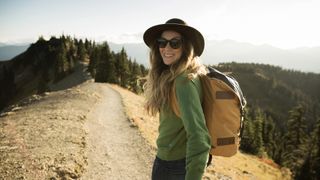
4. Sunglasses
In addition to your hat, sunglasses for hiking and running are vital to protect your precious peepers from sun damage. Because your hiking and running sunglasses can get a little beat up, it’s common to keep a cheap pair for the trail, but you still want to make sure that the pair you use block UV rays, which will be indicated by a sticker on the lenses when you buy them. Remember that polarized sunglasses offer better protection against the glare from water and snow, but won’t come with UV protection unless labeled as such. Learn more in our article about the differences between polarized and non polarized sunglasses.
Advnture Newsletter
All the latest inspiration, tips and guides to help you plan your next Advnture!
5. Sunscreen
For any skin that’s going to be exposed, you should apply sunscreen with broad spectrum protection that is SPF 15 or higher. Once you’re dressed, apply the sunscreen to all exposed areas like your hands, face, ears and neck about half an hour before going outside. It’s a good idea to apply it a little below your collar and cuffs to account for clothing moving once you get your backpack on. If you’re going to be outdoors for longer than two hours, carry the tube of sunscreen with you so you can reapply every two hours, especially areas where clothing or straps might be rubbing it off. Also carry lip balm with SPF since eating and drinking water can rub sunscreen off your lips faster than elsewhere.
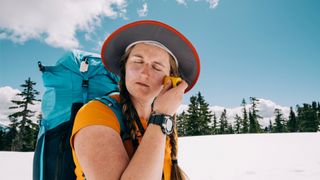
6. Check the weather forecast
In addition to checking your favorite weather app for the temperature and chance of rain, check the UV index too. The UV index predicts the strength of the sun in a particular location on a particular day and on days when it is listed as high or extreme, you want to take extra precautions.
Julia Clarke is a staff writer for Advnture.com and the author of the book Restorative Yoga for Beginners. She loves to explore mountains on foot, bike, skis and belay and then recover on the the yoga mat. Julia graduated with a degree in journalism in 2004 and spent eight years working as a radio presenter in Kansas City, Vermont, Boston and New York City before discovering the joys of the Rocky Mountains. She then detoured west to Colorado and enjoyed 11 years teaching yoga in Vail before returning to her hometown of Glasgow, Scotland in 2020 to focus on family and writing.

